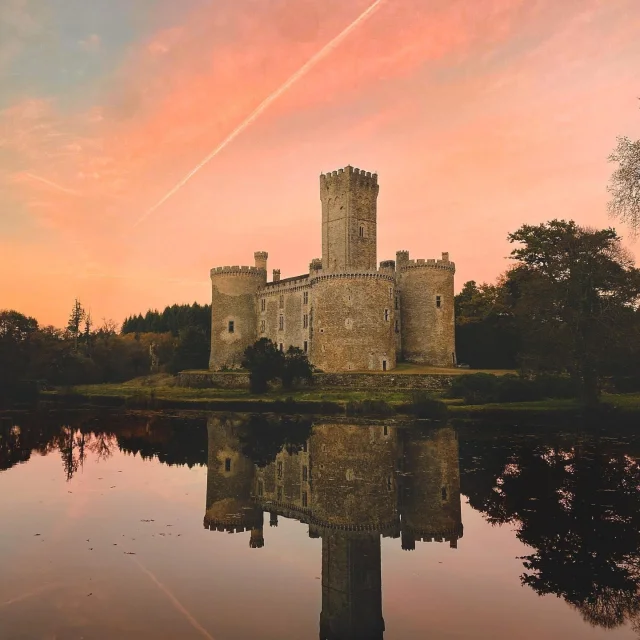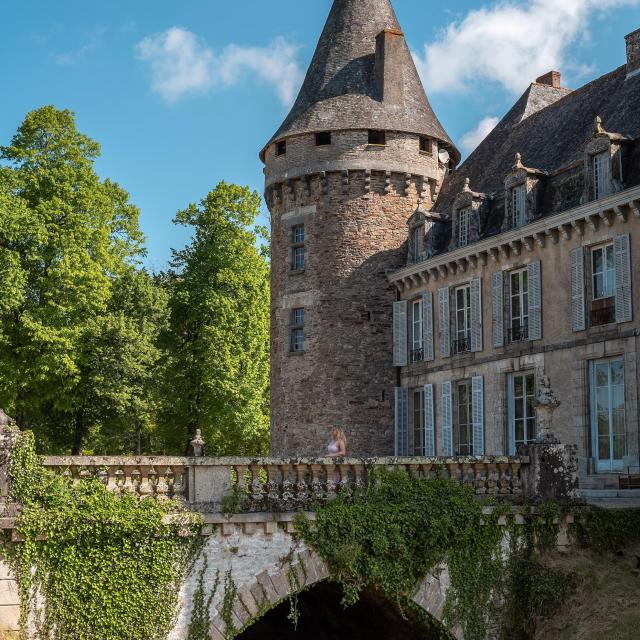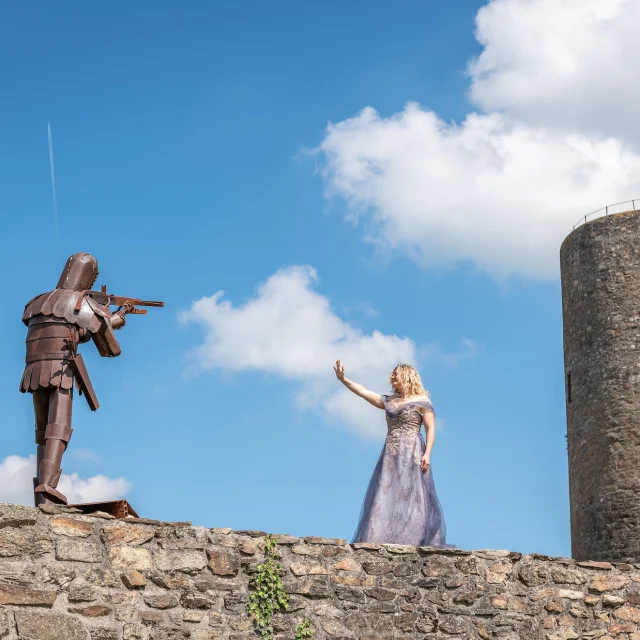 Jardin de l'Évêché Itinera Magica - Foehn Photographie
Jardin de l'Évêché Itinera Magica - Foehn Photographie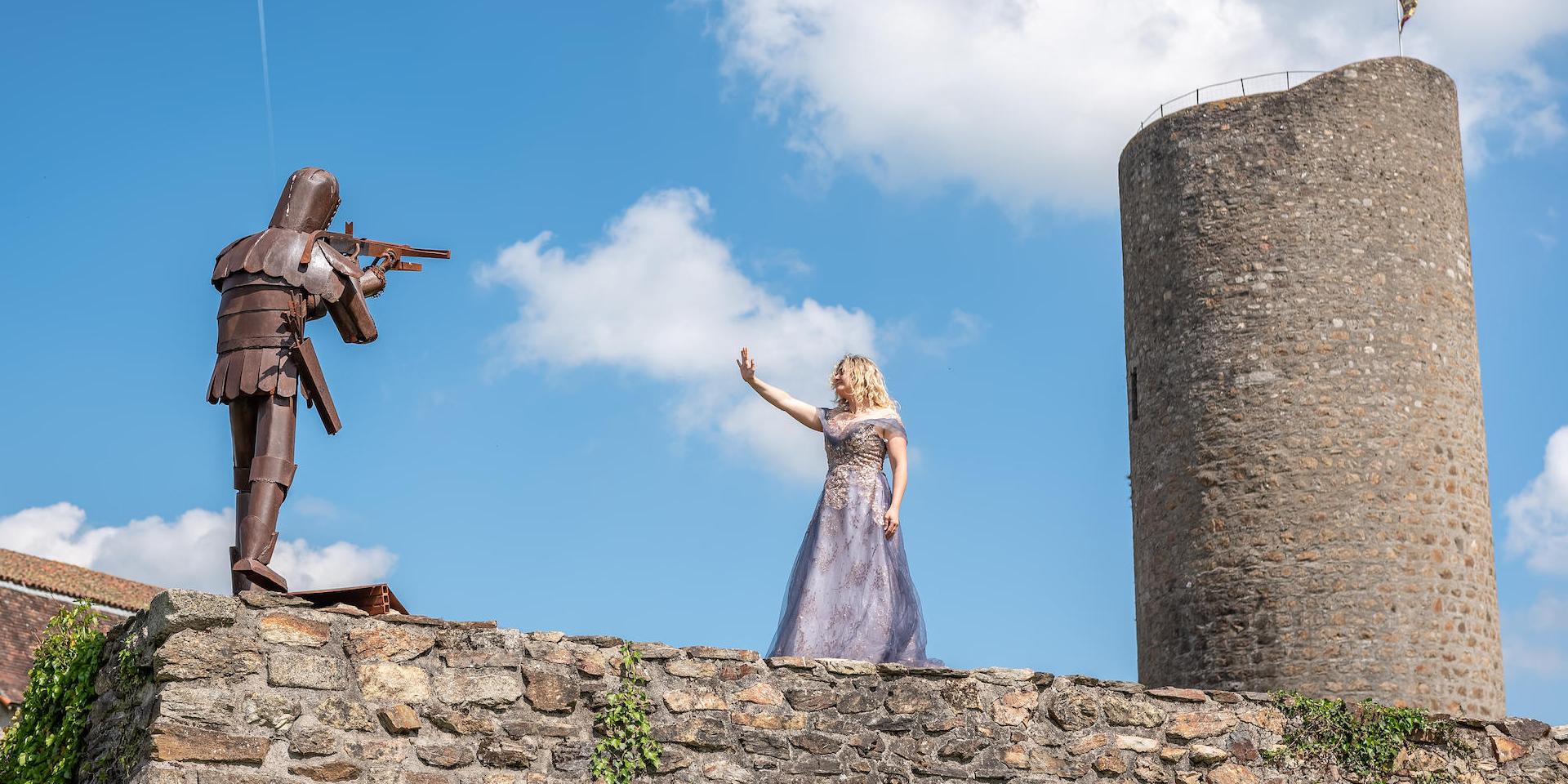 Château de Châlus-Chabrol à Châlus, route de Richard Coeur de Lion, Voie Verte
Château de Châlus-Chabrol à Châlus, route de Richard Coeur de Lion, Voie Verte Jardin de l'Évêché Itinera Magica - Foehn Photographie
Jardin de l'Évêché Itinera Magica - Foehn Photographie1. St. Stephen's Cathedral
The city and its historyBegun in 1273, this Gothic edifice was completed at the end of the 19th century, representing six centuries of construction.
The flamboyant Gothic Saint-Jean portal is particularly impressive when lit up at night. We strongly recommend a visit after dark!
Inside, you’ll find a richly ornate rood screen in Renaissance style: a building that remains one of the few great Gothic monuments south of the Loire.
Following an excavation campaign in the summer of 2005, an exceptional baptistery – one of the largest in France – was discovered at the foot of the cathedral.
The cathedral has been listed as a Monument Historique since 1862.
In 1169, King Richard became Duke of Aquitaine, and it was in Limoges, in Saint-Etienne Cathedral, that Richard was confirmed.
The festivities continued for days in the streets of Limoges. The half-timbered houses and cobblestones are signs of his presence in the old quarters of Limoges.
The charm of this district makes you want to linger and stroll through its picturesque little streets.
2. Solignac
The city and its ancient abbeyDuring your Limousin journey, discover a village that combines natural beauty and architectural charm: Solignac, where gourmet pleasures, river walks and a visit to the abbey church all come together.
Set on the banks of the Briance, dominated by its abbey, this village is sure to win your heart!
Whether you’re wandering through the ancient alleyways with their half-timbered houses, strolling along the water’s edge on a superb medieval bridge or on the Pont Rompu, you’ll immediately fall in love with Solignac.
In 632, Eloi built a monastery in Solemniac on land donated by King Dagobert. Today, the abbey church of Saint Pierre Saint Paul is one of the oldest and most remarkable churches in the Limousin: a beautiful edifice of impressive proportions.
To make the most of your visit, we’ve got a few tips for you!
You can, of course, explore the town from the banks of the Briance and its medieval streets. But what we really recommend is a 12km walk through the historic center of Solignac. For the more adventurous, there’s a Terra Aventura trail called “Le Jeu d’Éloi” for a more playful discovery.
 Crédit Photo M.l. Et D. Raimbault Solignac
Crédit Photo M.l. Et D. Raimbault Solignac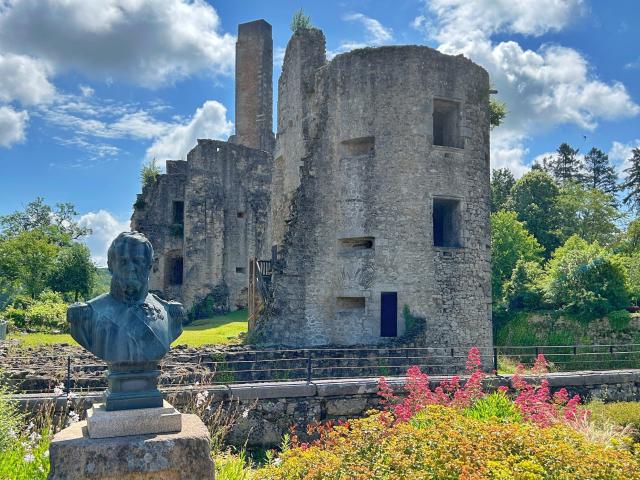 Chateau Des Cars Route Richard Coeur De Lion
Chateau Des Cars Route Richard Coeur De Lion3. Les Cars
Vestige of past greatnessA residence of the Pérusse family, dating from the 14th to 17th centuries, the Château des Cars presents a highly unusual profile.
Archaeological discoveries reveal the site’s Renaissance splendor, while the ruins show how the architecture was adapted to the use of firearms during the Wars of Religion.
Despite the destruction wrought by the French Revolution, the remains of two towers, pavilions and magnificent frescoed stables are still accessible today.
An exhibition featuring plans, models, archaeological furniture and a lapidary collection will give you an idea of the site at the height of its former splendor.
Finally, a digital reconstruction of the château and its surroundings has also been set up, allowing you to take a virtual tour of the site as it might have looked in the early 17th century.
Not far from there, near the village of Les Cars, continue your journey along this famous road to find the Château de Lastours.
4. Châlus, its castle and surroundings
Place of death of Richard the LionheartContinue your journey to the commune of Châlus.
It was here that Richard the Lionheart, King of England, was mortally wounded by a crossbow bolt in 1199 at the foot of the castle keep. His entrails now lie in the chapel of the Château de Châlus-Chabrol. An important stage on this tourist route, don’t hesitate to venture into the castle and its village.
Our little tip: to explore our beautiful region and retrace part of the historic route of its castles, get on (or rent) your bike and follow the 25 km cycle tourism loop “Sur les traces des Châteaux”.
Visit the Voie Verte des Hauts de Tardoire website to download the map and various audio guides.
If you prefer to take the car, you can also set off on a twenty-kilometer walk from Châlus.
You’ll discover the same castles as in the cycle touring loop mentioned above: Le Château de Montbrun, le Château de Brie, the Château de Maulmont and also the Grand Puyconnieux, one of the highest points in the Monts de Châlus.
A beautiful walk and panoramic views guaranteed!
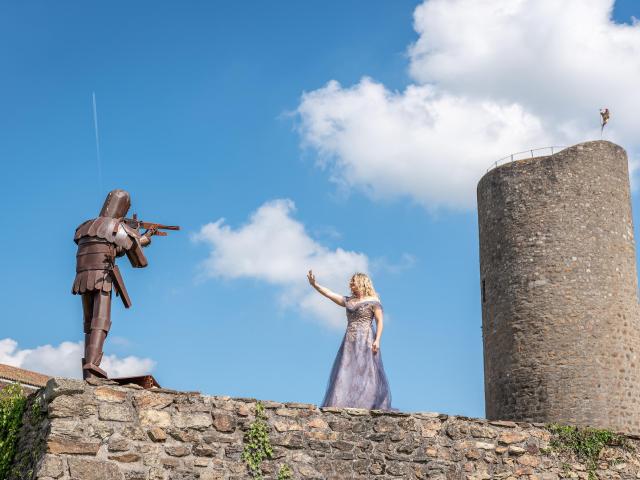 Château de Châlus-Chabrol à Châlus, route de Richard Coeur de Lion, Voie Verte
Château de Châlus-Chabrol à Châlus, route de Richard Coeur de Lion, Voie Verte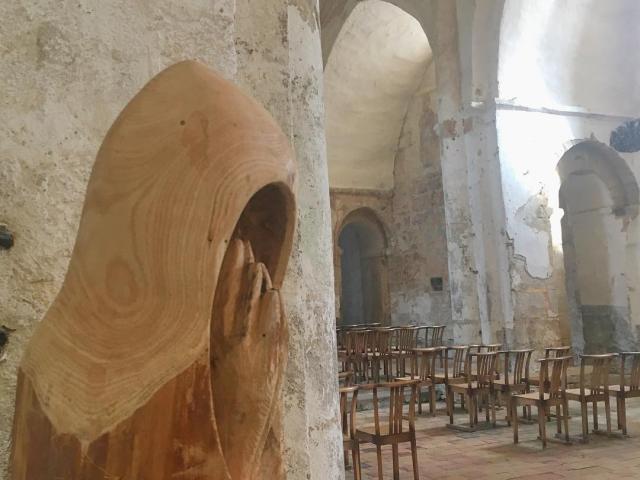 Les Salles Lavauguyon
Les Salles Lavauguyon5. Les Salles Lavauguyon
Church, Romanesque frescoes and castle ruinsFinish your tour in Les Salles Lavauguyon, famous for its church, a masterpiece of Romanesque art Limousin. It is currently closed for renovation.
Founded in the 11th century by the Viscounts of Rochechouart, it became the seat of an important priory. Already famous for its beautiful facade and long nave rising in successive levels to the choir, the discovery in 1986 of an exceptional collection of 12th-century frescoes made this site a must-see for visitors, classified as a Monument Historique as early as 1907.
The Château de Lavauguyon has endured many battles, repeatedly attacked, occupied and burned down.
The need for defense was reflected in the buildings, with four round towers in each corner, and in some places, the presence of a double wall.
Still under restoration today, the castle is only accessible for a visit around its perimeter, where you can observe the ruins of the various architectural elements.
Leaving from the village of Maisonnais-sur-Tardoire, the Lavauguyon Castle Trail offers a 3-hour, 12km walk combining heritage and rural landscapes. Along the way, you’ll discover the heritage of the village of Maisonnais, and in the hollow of a small valley, the Tardoire, a charming river, will bring you some fresh air.
